Presidential History of Talladega College
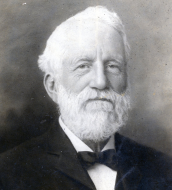 Rev. Henry E. Brown (Principal) 1867-1870
Brown was attending Oberlin College when he witnessed the passing of President Lincoln's casket. According to contemporary sources, it was at this moment that Brown declared he would devote the rest of his life to the service of elevating the Black community through education. He began working with the AMA and was given the assignment of coming to Talladega after Swayne and Savery had secured the campus and classroom building. Brown arrived with his wife, who served as a teacher and his brother-in-law who served as the college’s first superintendent. It was under Brown's administration that Foster Hall was constructed.
Rev. Henry E. Brown (Principal) 1867-1870
Brown was attending Oberlin College when he witnessed the passing of President Lincoln's casket. According to contemporary sources, it was at this moment that Brown declared he would devote the rest of his life to the service of elevating the Black community through education. He began working with the AMA and was given the assignment of coming to Talladega after Swayne and Savery had secured the campus and classroom building. Brown arrived with his wife, who served as a teacher and his brother-in-law who served as the college’s first superintendent. It was under Brown's administration that Foster Hall was constructed.
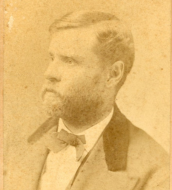 Albert Safford (Principal) 1870-1876
Safford also graduated from Oberlin. When Brown left in 1870, Safford was appointed by the AMA. Safford has served with the Union Army in the 150th Regiment of Ohio Volunteers as a Captain but transferred to Company I of the 5th U.S. Colored Regiment. After graduating from the University of Chicago Law School, he practiced law for a few years before deciding his true calling was at Talladega. Although Safford worked tirelessly to secure funds for the college, he admitted in his personal journals that he never felt like he was making sufficient progress. One major accomplishment during his administration was the construction of Stone Hall, the men's dormitory (destroyed by accidental fire in 1982).
Albert Safford (Principal) 1870-1876
Safford also graduated from Oberlin. When Brown left in 1870, Safford was appointed by the AMA. Safford has served with the Union Army in the 150th Regiment of Ohio Volunteers as a Captain but transferred to Company I of the 5th U.S. Colored Regiment. After graduating from the University of Chicago Law School, he practiced law for a few years before deciding his true calling was at Talladega. Although Safford worked tirelessly to secure funds for the college, he admitted in his personal journals that he never felt like he was making sufficient progress. One major accomplishment during his administration was the construction of Stone Hall, the men's dormitory (destroyed by accidental fire in 1982).
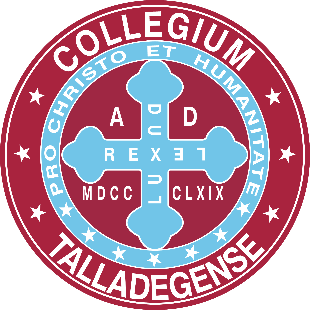 Edward Lorde (Principal) 1877-1878
Lorde was considered to be less favorable by many, even by contemporary standards. Andrews suggested him as a replacement for Safford. The highlight of Lorde's administration was the acquisition of several hundred acres of surrounding farmland, the majority of which now makes up the campus. The lowlight of his time in office was a public scandal involving segregated seating in the chapel during a public exposition. He was ousted from the college soon after. Later in life, he was arrested for bigamy.
Edward Lorde (Principal) 1877-1878
Lorde was considered to be less favorable by many, even by contemporary standards. Andrews suggested him as a replacement for Safford. The highlight of Lorde's administration was the acquisition of several hundred acres of surrounding farmland, the majority of which now makes up the campus. The lowlight of his time in office was a public scandal involving segregated seating in the chapel during a public exposition. He was ousted from the college soon after. Later in life, he was arrested for bigamy.
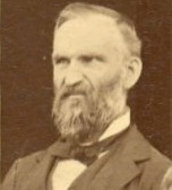 1. Henry S. DeForest 1879-1896
Deforest was the official first president of the college in 1879. Over the objections of the AMA, he personally saw that a proper college program was introduced in addition to the K-12, Normal School and Theological Seminary. DeForest, like Andrews, had served as a chaplain in the Army during the Civil War and brought some of that military style management to the campus. Under Deforest, the President's home was built. Deforest suffered an accident and died in 1892, a year after the college program began. His son, Lee Deforest, who graduated from the primary program before attending Yale, returned to fund the majority of the chapel that bears his father's name.
1. Henry S. DeForest 1879-1896
Deforest was the official first president of the college in 1879. Over the objections of the AMA, he personally saw that a proper college program was introduced in addition to the K-12, Normal School and Theological Seminary. DeForest, like Andrews, had served as a chaplain in the Army during the Civil War and brought some of that military style management to the campus. Under Deforest, the President's home was built. Deforest suffered an accident and died in 1892, a year after the college program began. His son, Lee Deforest, who graduated from the primary program before attending Yale, returned to fund the majority of the chapel that bears his father's name.
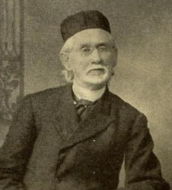 2. George W. Andrews 1896-1904
Rev. Andrews was the natural successor to Deforest. The two had worked in partnership for years and Andrews, who had overseen the Theological seminary since he arrived on campus in 1875, was well liked by the AMA. Andrews was a master fundraiser and a beloved theologian. However, by all accounts, he did not enjoy managing the college and left most of the day-to-day operations to Edwin Silsby, who had been hired as the college treasurer by DeForest in 1884. Born in 1833 in Oberlin, OH, Andrews' parents had used their farm as a stop on the Underground Railroad. Andrews served as acting president for almost 13 years, only stepping down because degenerative eyesight had left him completely blind. He stepped down as president in 1904 but remained head of the theology department until his forced retirement in 1908, upon which Andrews Hall, completed in 1910.
2. George W. Andrews 1896-1904
Rev. Andrews was the natural successor to Deforest. The two had worked in partnership for years and Andrews, who had overseen the Theological seminary since he arrived on campus in 1875, was well liked by the AMA. Andrews was a master fundraiser and a beloved theologian. However, by all accounts, he did not enjoy managing the college and left most of the day-to-day operations to Edwin Silsby, who had been hired as the college treasurer by DeForest in 1884. Born in 1833 in Oberlin, OH, Andrews' parents had used their farm as a stop on the Underground Railroad. Andrews served as acting president for almost 13 years, only stepping down because degenerative eyesight had left him completely blind. He stepped down as president in 1904 but remained head of the theology department until his forced retirement in 1908, upon which Andrews Hall, completed in 1910.
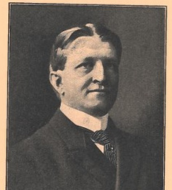 3. Rev. Benjamin M. Nyce 1904-1908
Nyce had never even visited the south before agreeing to become Andrews' successor. Having attended Princeton and primarily pastored in New York, he was familiar to the AMA trustees. His enthusiasm waned when he arrived on campus to discover how little actual funding the AMA sent Talladega to their other colleges. His two major accomplishments were securing a $100,000 donation from the estate of James Callanan and the hiring of alum William Pickens as a professor. Pickens would go on to found the first chapter of the NAACP in Alabama on the campus. Nyce resigned in 1907, frustrated by the college's finances and worn down after a series of student revolts stemming from what the students felt were unfair hiring practices.
3. Rev. Benjamin M. Nyce 1904-1908
Nyce had never even visited the south before agreeing to become Andrews' successor. Having attended Princeton and primarily pastored in New York, he was familiar to the AMA trustees. His enthusiasm waned when he arrived on campus to discover how little actual funding the AMA sent Talladega to their other colleges. His two major accomplishments were securing a $100,000 donation from the estate of James Callanan and the hiring of alum William Pickens as a professor. Pickens would go on to found the first chapter of the NAACP in Alabama on the campus. Nyce resigned in 1907, frustrated by the college's finances and worn down after a series of student revolts stemming from what the students felt were unfair hiring practices.
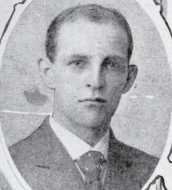 4. J.M.P. Metcalf 1908-1916
John Milton Putnam Metcalf had arrived on campus in 1896 and had served as professor of theology under Andrews and Dean of the theology department under Nyce. He served as acting president upon Nyce's sudden departure and was officially appointed by the board in 1908. The board was hesitant to appoint him as he was notoriously shy in public and wasn't well liked by students or faculty outside of the theology department. Like so many of the early presidents he was a graduate of Oberlin. He resigned in 1915 and became a pastor at a Congregationalist church in Osbourne, KS.
4. J.M.P. Metcalf 1908-1916
John Milton Putnam Metcalf had arrived on campus in 1896 and had served as professor of theology under Andrews and Dean of the theology department under Nyce. He served as acting president upon Nyce's sudden departure and was officially appointed by the board in 1908. The board was hesitant to appoint him as he was notoriously shy in public and wasn't well liked by students or faculty outside of the theology department. Like so many of the early presidents he was a graduate of Oberlin. He resigned in 1915 and became a pastor at a Congregationalist church in Osbourne, KS.
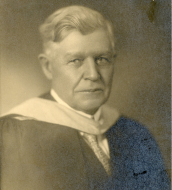 5. Frederick A. Sumner 1916-1933
Sumner is known as "The builder of Talladega College" Undergrad at Oberlin, Master’s of Divinity from Yale, he served as a pastor of a Congregationalist church in Connecticut prior to coming to Talladega. Andrews called him "a round peg in a round hole, a perfect fit.". Students, Alumni, Faculty and the Board all loved him. In addition to bringing in the funding to build the Callanan Gymnasium, Fanning Refractory, and Seymour Hall, he also introduced the College Council (later the SGA), closed the industrial and agriculture departments, and got the college accredited by SACS.
Sumner was the nephew of Massachusetts Senator Charles Sumner (The Sumner Incident). In spite of his major fundraising and building campaigns, he hired James T. Cater as Dean.
5. Frederick A. Sumner 1916-1933
Sumner is known as "The builder of Talladega College" Undergrad at Oberlin, Master’s of Divinity from Yale, he served as a pastor of a Congregationalist church in Connecticut prior to coming to Talladega. Andrews called him "a round peg in a round hole, a perfect fit.". Students, Alumni, Faculty and the Board all loved him. In addition to bringing in the funding to build the Callanan Gymnasium, Fanning Refractory, and Seymour Hall, he also introduced the College Council (later the SGA), closed the industrial and agriculture departments, and got the college accredited by SACS.
Sumner was the nephew of Massachusetts Senator Charles Sumner (The Sumner Incident). In spite of his major fundraising and building campaigns, he hired James T. Cater as Dean.
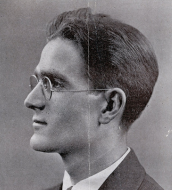 6. Buell Gallagher 1933-1943
Buell G. Gallagher became president of Talladega College in 1933 at age 29, following the unexpected death of his predecessor, Sumner. Originally from Illinois, Gallagher brought a strong academic background and a commitment to modernization. Guided by Dean Cater, he implemented new academic divisions and enriched the college’s arts and humanities programs, including theater, literary societies, and fine arts. He championed educational initiatives focused on the Black community and oversaw the construction of Savery Library—the first campus building named for a Black man—along with its influential murals by Hale Woodruff and a bookmobile program serving rural Black schools. Gallagher's presidency coincided with WWII, and in 1943, citing family dissatisfaction and personal fatigue, he resigned and moved to California. He later held positions in religious education and public service, including president of City College of New York.
The grandson of Buell Gallagher now serves on our Board of Trustees.
6. Buell Gallagher 1933-1943
Buell G. Gallagher became president of Talladega College in 1933 at age 29, following the unexpected death of his predecessor, Sumner. Originally from Illinois, Gallagher brought a strong academic background and a commitment to modernization. Guided by Dean Cater, he implemented new academic divisions and enriched the college’s arts and humanities programs, including theater, literary societies, and fine arts. He championed educational initiatives focused on the Black community and oversaw the construction of Savery Library—the first campus building named for a Black man—along with its influential murals by Hale Woodruff and a bookmobile program serving rural Black schools. Gallagher's presidency coincided with WWII, and in 1943, citing family dissatisfaction and personal fatigue, he resigned and moved to California. He later held positions in religious education and public service, including president of City College of New York.
The grandson of Buell Gallagher now serves on our Board of Trustees.
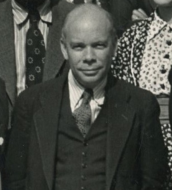 7. James T. Cater 1943-1945
James Tate Cater, a Harvard-educated scholar who studied under W.E.B. Du Bois, was a transformative figure at Talladega College and widely regarded as its most influential leader. Recruited as Dean in 1919, Cater elevated the college’s academic stature, notably securing its inclusion in a prestigious educational survey with the University of Chicago—the only Black college to participate. Though he became acting president in 1943 during a wartime crisis that threatened the college’s survival, he was never officially appointed president. Many believed that, had WWII ended earlier, Cater would have become Talladega’s first Black president. Despite strong support from students and some trustees, the board bypassed him in favor of Adam Beitell in 1945. Most of Cater’s lasting contributions occurred during his tenure as Dean, where he shaped the college's progressive and inclusive educational vision.
7. James T. Cater 1943-1945
James Tate Cater, a Harvard-educated scholar who studied under W.E.B. Du Bois, was a transformative figure at Talladega College and widely regarded as its most influential leader. Recruited as Dean in 1919, Cater elevated the college’s academic stature, notably securing its inclusion in a prestigious educational survey with the University of Chicago—the only Black college to participate. Though he became acting president in 1943 during a wartime crisis that threatened the college’s survival, he was never officially appointed president. Many believed that, had WWII ended earlier, Cater would have become Talladega’s first Black president. Despite strong support from students and some trustees, the board bypassed him in favor of Adam Beitell in 1945. Most of Cater’s lasting contributions occurred during his tenure as Dean, where he shaped the college's progressive and inclusive educational vision.
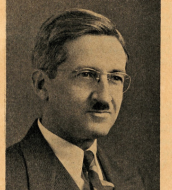 8. Adam D. Beittel 1945-1952
Adam Beittel, a graduate of Oberlin College and the University of Chicago, brought a wealth of experience from his time at Guilford College in North Carolina to Talladega College in 1945. Unlike his predecessors, Beittel was deeply familiar with the South, but his presidency quickly became controversial. A staunch civil rights advocate, his bold leadership style created a divide between those who supported James Tate Cater and those who backed Beittel’s new direction. His tenure saw increased racial violence, including a cross burning on campus in 1948. While he reinstated the athletic program and expanded the college’s media presence, his growing paranoia about a "Red Scare" and ongoing tensions with faculty—especially over the denial of tenure to Professor Fritz Pappenheim in 1951—led to his resignation. Beittel later had a similarly tumultuous presidency at Tougaloo College.
8. Adam D. Beittel 1945-1952
Adam Beittel, a graduate of Oberlin College and the University of Chicago, brought a wealth of experience from his time at Guilford College in North Carolina to Talladega College in 1945. Unlike his predecessors, Beittel was deeply familiar with the South, but his presidency quickly became controversial. A staunch civil rights advocate, his bold leadership style created a divide between those who supported James Tate Cater and those who backed Beittel’s new direction. His tenure saw increased racial violence, including a cross burning on campus in 1948. While he reinstated the athletic program and expanded the college’s media presence, his growing paranoia about a "Red Scare" and ongoing tensions with faculty—especially over the denial of tenure to Professor Fritz Pappenheim in 1951—led to his resignation. Beittel later had a similarly tumultuous presidency at Tougaloo College.
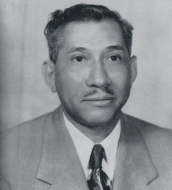 9. Rev. Arthur Gray 1952-1962
Rev. Arthur Douglass Gray, originally from Sheffield, Alabama, was a dedicated alumnus who returned to serve his college despite personal ambitions. An outstanding student and member of Alpha Phi Alpha, Gray began his career as a high school principal before becoming a pastor in Washington, D.C., and later Chicago. In 1952, he became president of his alma mater, leading campus modernization projects and navigating the institution through the turbulent civil rights era. He maintained strong leadership during KKK activity and regional unrest, fostering connections with leaders like Martin Luther King Jr. Gray ultimately stepped down in 1962, recommending Herman Long as his successor, and returned to his pastoral work in Chicago, where he remained until his death in 1979.
9. Rev. Arthur Gray 1952-1962
Rev. Arthur Douglass Gray, originally from Sheffield, Alabama, was a dedicated alumnus who returned to serve his college despite personal ambitions. An outstanding student and member of Alpha Phi Alpha, Gray began his career as a high school principal before becoming a pastor in Washington, D.C., and later Chicago. In 1952, he became president of his alma mater, leading campus modernization projects and navigating the institution through the turbulent civil rights era. He maintained strong leadership during KKK activity and regional unrest, fostering connections with leaders like Martin Luther King Jr. Gray ultimately stepped down in 1962, recommending Herman Long as his successor, and returned to his pastoral work in Chicago, where he remained until his death in 1979.
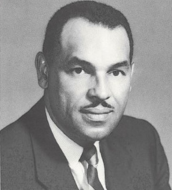 10. Dr. Herman H. Long 1963-1976
Herman Hodge Long, born in Birmingham and raised in poverty in Chicago, rose to become a transformative leader in education. Despite early hardships, including delayed college enrollment and personal losses, Long excelled as a three-sport athlete and student leader, graduating in 1935 before earning a Ph.D. in Economics from the University of Michigan. He worked with renowned sociologist Charles S. Johnson at Fisk University before becoming the 9th president of Talladega College in 1962, officially inaugurated in 1963 with Thurgood Marshall as keynote speaker. Long oversaw major campus expansions, including Ish, Shores, Crawford Halls, and the College Hills apartments, which he considered his greatest achievement for providing affordable housing. He also served as president of the UNCF, coining its iconic motto, A Mind is a Terrible Thing to Waste. Known for his diplomacy during a turbulent era, Long remained dedicated to the college until his death from lung cancer in 1976, with his ashes interred on campus at DeForest Chapel.
10. Dr. Herman H. Long 1963-1976
Herman Hodge Long, born in Birmingham and raised in poverty in Chicago, rose to become a transformative leader in education. Despite early hardships, including delayed college enrollment and personal losses, Long excelled as a three-sport athlete and student leader, graduating in 1935 before earning a Ph.D. in Economics from the University of Michigan. He worked with renowned sociologist Charles S. Johnson at Fisk University before becoming the 9th president of Talladega College in 1962, officially inaugurated in 1963 with Thurgood Marshall as keynote speaker. Long oversaw major campus expansions, including Ish, Shores, Crawford Halls, and the College Hills apartments, which he considered his greatest achievement for providing affordable housing. He also served as president of the UNCF, coining its iconic motto, A Mind is a Terrible Thing to Waste. Known for his diplomacy during a turbulent era, Long remained dedicated to the college until his death from lung cancer in 1976, with his ashes interred on campus at DeForest Chapel.
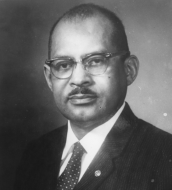 11. Dr. Aaron Brown 1976-1977
After the sudden death of Herman Long in 1976, the Talladega College Board of Trustees appointed alumnus Aaron Brown (Class of 1928) as interim president. Born in Pensacola, Florida, Brown began his career as a science professor before earning his master’s from Atlanta University and later a Ph.D. from the University of Chicago in 1943. His career spanned roles as high school principal, dean, registrar, and superintendent, culminating in his presidency at Albany State University from 1943 to 1954. He later became a long-serving professor at Long Island University and the only African American vice president of the NYC Board of Education. A dedicated member of Alpha Phi Alpha, Brown led the NYC alumni chapter and served on national educational committees. Though he led Talladega College for only a year, he played a crucial transitional role before returning to New York, where he died in 1992 at age 87.
11. Dr. Aaron Brown 1976-1977
After the sudden death of Herman Long in 1976, the Talladega College Board of Trustees appointed alumnus Aaron Brown (Class of 1928) as interim president. Born in Pensacola, Florida, Brown began his career as a science professor before earning his master’s from Atlanta University and later a Ph.D. from the University of Chicago in 1943. His career spanned roles as high school principal, dean, registrar, and superintendent, culminating in his presidency at Albany State University from 1943 to 1954. He later became a long-serving professor at Long Island University and the only African American vice president of the NYC Board of Education. A dedicated member of Alpha Phi Alpha, Brown led the NYC alumni chapter and served on national educational committees. Though he led Talladega College for only a year, he played a crucial transitional role before returning to New York, where he died in 1992 at age 87.
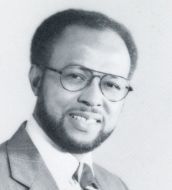 12. Dr. Joseph N. Gayles, Jr. 1977-1983
Joseph Nathaniel Gayles, Jr., born in Birmingham in 1937, became president of Talladega College in 1977—remarkably, filling a role once held by fellow Birmingham native Herman Long, who had graduated just two years before Gayles was born. A graduate of Dillard University and holder of a Ph.D. from Brown University, Gayles had a diverse academic and professional background, including teaching roles at Oregon State and Sweden's Uppsala University, and a brief tenure at IBM. He joined the Morehouse College faculty in 1969, where he played a key role in founding the Morehouse School of Medicine by helping secure its initial $3 million grant. His fundraising success led to his appointment as president of Talladega, where he launched the school’s first capital campaign since the Sumner era and worked to improve enrollment. Despite institutional challenges, he left Talladega stronger in 1983 and returned to Morehouse as VP of Institutional Advancement, continuing to advance the medical school to a full four-year program. In 1996, he launched his own consulting firm. Gayles passed away in Atlanta in 2008.
12. Dr. Joseph N. Gayles, Jr. 1977-1983
Joseph Nathaniel Gayles, Jr., born in Birmingham in 1937, became president of Talladega College in 1977—remarkably, filling a role once held by fellow Birmingham native Herman Long, who had graduated just two years before Gayles was born. A graduate of Dillard University and holder of a Ph.D. from Brown University, Gayles had a diverse academic and professional background, including teaching roles at Oregon State and Sweden's Uppsala University, and a brief tenure at IBM. He joined the Morehouse College faculty in 1969, where he played a key role in founding the Morehouse School of Medicine by helping secure its initial $3 million grant. His fundraising success led to his appointment as president of Talladega, where he launched the school’s first capital campaign since the Sumner era and worked to improve enrollment. Despite institutional challenges, he left Talladega stronger in 1983 and returned to Morehouse as VP of Institutional Advancement, continuing to advance the medical school to a full four-year program. In 1996, he launched his own consulting firm. Gayles passed away in Atlanta in 2008.
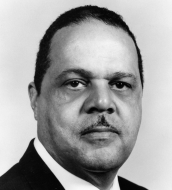 13. Dr. Randolph W. Bromery 1983
Bill Bromery served briefly as interim president of Talladega College in 1983, but his remarkable life and career make his tenure notable. Born in Maryland and raised in Detroit, he served as a Tuskegee Airman during World War II, flying missions in Italy. After the war, he attended Howard University while working full-time as the first Black professional geophysicist with the U.S. Geological Survey. He earned a master’s in geology from American University and a Ph.D. from Johns Hopkins, publishing extensively and receiving accolades for his research. Bromery became Chancellor of UMass Amherst in 1971, where he helped establish African-American studies as a formal discipline and secured the papers of W.E.B. Du Bois for the university. Following his chancellorship, he served on various boards, including that of Talladega College. After Joseph Gayles resigned, Bromery stepped in as interim president for six months before passing leadership to Paul B. Mohr. He later became president of the Geological Society of America and served on the President’s Committee on the National Medal of Science. Bromery died in 2013 at the age of 87.
13. Dr. Randolph W. Bromery 1983
Bill Bromery served briefly as interim president of Talladega College in 1983, but his remarkable life and career make his tenure notable. Born in Maryland and raised in Detroit, he served as a Tuskegee Airman during World War II, flying missions in Italy. After the war, he attended Howard University while working full-time as the first Black professional geophysicist with the U.S. Geological Survey. He earned a master’s in geology from American University and a Ph.D. from Johns Hopkins, publishing extensively and receiving accolades for his research. Bromery became Chancellor of UMass Amherst in 1971, where he helped establish African-American studies as a formal discipline and secured the papers of W.E.B. Du Bois for the university. Following his chancellorship, he served on various boards, including that of Talladega College. After Joseph Gayles resigned, Bromery stepped in as interim president for six months before passing leadership to Paul B. Mohr. He later became president of the Geological Society of America and served on the President’s Committee on the National Medal of Science. Bromery died in 2013 at the age of 87.
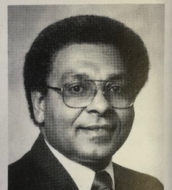 14. Dr. Paul B. Mohr Sr. 1984-1988
Paul Bledsoe Mohr, born in Waco, Texas and raised in St. Petersburg, Florida, was a mathematician and educator who became president of Talladega College in 1984. A graduate of Florida A&M University (FAMU), where he earned his BS in mathematics and pledged Alpha Phi Alpha, Mohr went on to earn advanced degrees in science and education from Oklahoma State. Before his presidency, he served in academic leadership roles at FAMU and Norfolk State University. Despite his strong academic background, Mohr’s tenure at Talladega was marked by deep conflict with the faculty. Appointed amid controversy, he faced declining enrollment and responded with aggressive administrative decisions—including dissolving the faculty senate and tenure policies—which led to faculty resignations and lawsuits. Mohr resigned in 1988 and later held leadership roles in higher education policy, receiving numerous honors for his contributions to STEM education and public service. He passed away in Montgomery, Alabama in 2022.
14. Dr. Paul B. Mohr Sr. 1984-1988
Paul Bledsoe Mohr, born in Waco, Texas and raised in St. Petersburg, Florida, was a mathematician and educator who became president of Talladega College in 1984. A graduate of Florida A&M University (FAMU), where he earned his BS in mathematics and pledged Alpha Phi Alpha, Mohr went on to earn advanced degrees in science and education from Oklahoma State. Before his presidency, he served in academic leadership roles at FAMU and Norfolk State University. Despite his strong academic background, Mohr’s tenure at Talladega was marked by deep conflict with the faculty. Appointed amid controversy, he faced declining enrollment and responded with aggressive administrative decisions—including dissolving the faculty senate and tenure policies—which led to faculty resignations and lawsuits. Mohr resigned in 1988 and later held leadership roles in higher education policy, receiving numerous honors for his contributions to STEM education and public service. He passed away in Montgomery, Alabama in 2022.
 15. Dr. Joseph E. Thompson 1988-1981
Joseph Earl Thompson Sr. served as interim president of Talladega College from 1988 to 1991, making him the longest-serving interim president in the school’s history. Born in Columbia, South Carolina, where his father was Dean of Allen University, Thompson followed in his father’s footsteps in education. He graduated from Johnson C. Smith University (where he pledged Alpha Phi Alpha) and earned multiple advanced degrees in theology, English, and religious education from Union Theological Seminary and New York University. In New York, he co-founded St. Paul Community Church. Thompson later served as a professor and chaplain at several HBCUs before becoming Dean at Talladega. When President Paul Mohr resigned, Thompson stepped in with experience and stability, bolstered by prior work with SACSCOC. In recognition of his leadership, Talladega awarded him an honorary Doctor of Laws degree. He retired in 1998 as Executive Director of the Atlanta University Center and continued to serve in ministry until his death in 2017.
15. Dr. Joseph E. Thompson 1988-1981
Joseph Earl Thompson Sr. served as interim president of Talladega College from 1988 to 1991, making him the longest-serving interim president in the school’s history. Born in Columbia, South Carolina, where his father was Dean of Allen University, Thompson followed in his father’s footsteps in education. He graduated from Johnson C. Smith University (where he pledged Alpha Phi Alpha) and earned multiple advanced degrees in theology, English, and religious education from Union Theological Seminary and New York University. In New York, he co-founded St. Paul Community Church. Thompson later served as a professor and chaplain at several HBCUs before becoming Dean at Talladega. When President Paul Mohr resigned, Thompson stepped in with experience and stability, bolstered by prior work with SACSCOC. In recognition of his leadership, Talladega awarded him an honorary Doctor of Laws degree. He retired in 1998 as Executive Director of the Atlanta University Center and continued to serve in ministry until his death in 2017.
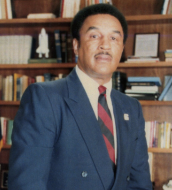 16. Dr. Joseph B. Johnson 1991-1998
Joseph B. Johnson, born in New Orleans, was an accomplished educator and administrator who served as president of Talladega College from 1991 to 1998. A graduate of Grambling State University (where he pledged Kappa Alpha Psi), Johnson earned his master’s and Ph.D. from the University of Colorado. After teaching high school in Louisiana, he became assistant to the president at the University of Colorado and later returned to lead his alma mater, Grambling, where he successfully revitalized the institution. At Talladega, he initially boosted enrollment and stabilized finances, with the construction of Senior Grove marking his major campus development. Beloved by students, Johnson created cherished traditions like the President’s Midnight Pancake Breakfast and supported new cultural programming on campus. After retiring in 1998, he remained active on national boards and received numerous accolades. He passed away in 2018 at the age of 83.
16. Dr. Joseph B. Johnson 1991-1998
Joseph B. Johnson, born in New Orleans, was an accomplished educator and administrator who served as president of Talladega College from 1991 to 1998. A graduate of Grambling State University (where he pledged Kappa Alpha Psi), Johnson earned his master’s and Ph.D. from the University of Colorado. After teaching high school in Louisiana, he became assistant to the president at the University of Colorado and later returned to lead his alma mater, Grambling, where he successfully revitalized the institution. At Talladega, he initially boosted enrollment and stabilized finances, with the construction of Senior Grove marking his major campus development. Beloved by students, Johnson created cherished traditions like the President’s Midnight Pancake Breakfast and supported new cultural programming on campus. After retiring in 1998, he remained active on national boards and received numerous accolades. He passed away in 2018 at the age of 83.
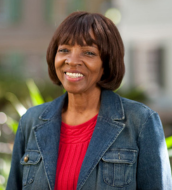 17. Dr. Marguerite Archie-Hudson 1998-2001
Marguerite Archie-Hudson, born in Young Island near Charleston, South Carolina, was a trailblazing educator and public servant who became the first female president of Talladega College and the first African-American woman to lead a four-year college in Alabama. A 1958 graduate of Talladega College (where she pledged Delta Sigma Theta), she went on to earn a master’s degree from Harvard and a Ph.D. from UCLA. Her diverse career included roles as a guidance counselor, psychometrist, and director of both Upward Bound and college counseling programs. In the 1970s, she entered public service, later winning a seat in California’s State Assembly for the 48th district in 1990. Her presidency at Talladega marked a historic milestone for both the college and the state.
17. Dr. Marguerite Archie-Hudson 1998-2001
Marguerite Archie-Hudson, born in Young Island near Charleston, South Carolina, was a trailblazing educator and public servant who became the first female president of Talladega College and the first African-American woman to lead a four-year college in Alabama. A 1958 graduate of Talladega College (where she pledged Delta Sigma Theta), she went on to earn a master’s degree from Harvard and a Ph.D. from UCLA. Her diverse career included roles as a guidance counselor, psychometrist, and director of both Upward Bound and college counseling programs. In the 1970s, she entered public service, later winning a seat in California’s State Assembly for the 48th district in 1990. Her presidency at Talladega marked a historic milestone for both the college and the state.
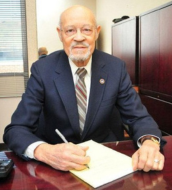 18. Dr. Henry Ponder 2001-2004
Henry Ponder, born in 1928 in Wewoka, Oklahoma, was a distinguished educator and leader known for rescuing struggling HBCUs. One of 14 children, Ponder graduated from Langston University (where he pledged Alpha Phi Alpha and later became its national president) and earned advanced degrees in agriculture from Oklahoma State and Ohio State. His academic career included roles at Virginia State, Fort Valley State, and Alabama A&M before he became president of Benedict College in 1973, where he increased the endowment dramatically. In 1984, he became president of Fisk University, leading a major financial turnaround there as well. Recognized as one of the “One Hundred Most Effective College Presidents in the U.S.,” Ponder later served as CEO of NAFEO. Though he planned to retire in 2001, he answered the call to lead Talladega College, overseeing curriculum revitalization and a successful re-accreditation. He retired again, only to return as president of Langston University, finally retiring in 2013.
18. Dr. Henry Ponder 2001-2004
Henry Ponder, born in 1928 in Wewoka, Oklahoma, was a distinguished educator and leader known for rescuing struggling HBCUs. One of 14 children, Ponder graduated from Langston University (where he pledged Alpha Phi Alpha and later became its national president) and earned advanced degrees in agriculture from Oklahoma State and Ohio State. His academic career included roles at Virginia State, Fort Valley State, and Alabama A&M before he became president of Benedict College in 1973, where he increased the endowment dramatically. In 1984, he became president of Fisk University, leading a major financial turnaround there as well. Recognized as one of the “One Hundred Most Effective College Presidents in the U.S.,” Ponder later served as CEO of NAFEO. Though he planned to retire in 2001, he answered the call to lead Talladega College, overseeing curriculum revitalization and a successful re-accreditation. He retired again, only to return as president of Langston University, finally retiring in 2013.
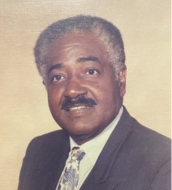 19. Dr. Oscar L. Prater 2005-2007
Oscar Prater, a native of Sylacauga, Alabama, grew up just down the road from Talladega College. As a student, he studied mathematics and science alongside future TC Provost Art Bacon and played basketball with William R. Harvey, who would go on to become president of Hampton University. Both Prater and Harvey pledged Omega Psi Phi. After graduating from Talladega in 1961, Prater earned a master’s degree from Hampton University and a Ph.D. from The College of William and Mary, laying the foundation for a distinguished career in higher education.
19. Dr. Oscar L. Prater 2005-2007
Oscar Prater, a native of Sylacauga, Alabama, grew up just down the road from Talladega College. As a student, he studied mathematics and science alongside future TC Provost Art Bacon and played basketball with William R. Harvey, who would go on to become president of Hampton University. Both Prater and Harvey pledged Omega Psi Phi. After graduating from Talladega in 1961, Prater earned a master’s degree from Hampton University and a Ph.D. from The College of William and Mary, laying the foundation for a distinguished career in higher education.
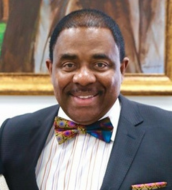 20. Dr. Billy C. Hawkins 2008-2021
Billy C. Hawkins, born in Kent, Ohio, is a seasoned educator and administrator who served as president of Talladega College from 2007 to 2022. A member of Omega Psi Phi, he earned degrees from Ferris State, Central Michigan, and Michigan State University. Hawkins began his career teaching high school before entering higher education, holding key leadership roles at Mississippi Valley State, St. Paul’s College, and Morrisville State College—where he helped regain accreditation and boosted enrollment. At Talladega, Hawkins led a period of major growth, including record enrollment, expanded athletics, a new marching band, and significant campus development, such as the Harvey Museum of Art and the Hawkins Student Activity Center. Health concerns and the challenges of the COVID-19 pandemic led to his resignation. He continues to serve the higher education community through roles with the UNCF and the White House Board on HBCUs.
20. Dr. Billy C. Hawkins 2008-2021
Billy C. Hawkins, born in Kent, Ohio, is a seasoned educator and administrator who served as president of Talladega College from 2007 to 2022. A member of Omega Psi Phi, he earned degrees from Ferris State, Central Michigan, and Michigan State University. Hawkins began his career teaching high school before entering higher education, holding key leadership roles at Mississippi Valley State, St. Paul’s College, and Morrisville State College—where he helped regain accreditation and boosted enrollment. At Talladega, Hawkins led a period of major growth, including record enrollment, expanded athletics, a new marching band, and significant campus development, such as the Harvey Museum of Art and the Hawkins Student Activity Center. Health concerns and the challenges of the COVID-19 pandemic led to his resignation. He continues to serve the higher education community through roles with the UNCF and the White House Board on HBCUs.
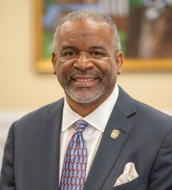 21. Dr. Gregory J. Vincent 2022-2024
Greg Vincent, born in Harlem and raised in the Bronx, New York, is a legal scholar and academic leader who became president of Talladega College in July 2022. A graduate of Hobart and William Smith Colleges (where he pledged Alpha Phi Alpha), he earned a J.D. from Ohio State and a Ph.D. from the University of Pennsylvania. His career includes teaching law at UT Austin and the University of Oregon, serving as Vice Provost and law professor at LSU, and working as an assistant attorney general in Ohio. He later returned to lead his alma mater as president before resigning in 2018 amid a plagiarism controversy. At Talladega, Vincent launched new initiatives, including the founding of the college’s first women’s gymnastics team.
21. Dr. Gregory J. Vincent 2022-2024
Greg Vincent, born in Harlem and raised in the Bronx, New York, is a legal scholar and academic leader who became president of Talladega College in July 2022. A graduate of Hobart and William Smith Colleges (where he pledged Alpha Phi Alpha), he earned a J.D. from Ohio State and a Ph.D. from the University of Pennsylvania. His career includes teaching law at UT Austin and the University of Oregon, serving as Vice Provost and law professor at LSU, and working as an assistant attorney general in Ohio. He later returned to lead his alma mater as president before resigning in 2018 amid a plagiarism controversy. At Talladega, Vincent launched new initiatives, including the founding of the college’s first women’s gymnastics team.
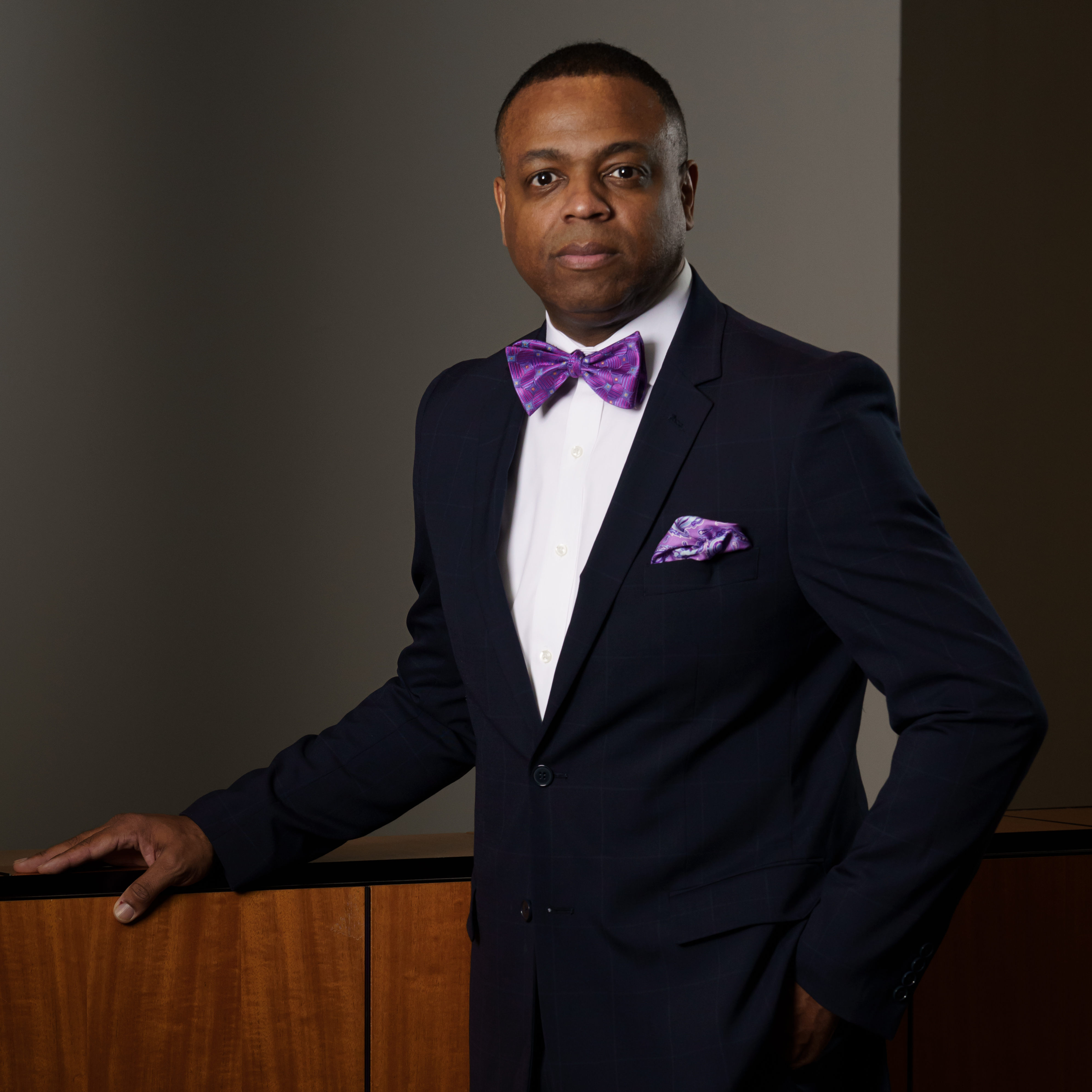 22. Dr. Willie L. Todd, Jr. 2025-
Willie L. Todd, Jr. a native of West Point, Georgia, and raised in Decatur, currently serves as president of Talladega College. He holds a Ph.D. in English from Georgia State University, along with multiple degrees in education and English from Albany State University and Regent University. Known for his commitment to academic leadership and student success, President Todd has been recognized with numerous honors, including the 2022 CEO/President of the Year by the South Carolina Association of Technical College Commissioners, the 2021 Shining Star Award from the South Carolina Commission for Minority Affairs, and the prestigious Diamond Award for excellence in education and community leadership. Dr. Todd previously served as President and CEO of Denmark Technical College and is a Life Member of Kappa Alpha Psi Fraternity, Inc.
22. Dr. Willie L. Todd, Jr. 2025-
Willie L. Todd, Jr. a native of West Point, Georgia, and raised in Decatur, currently serves as president of Talladega College. He holds a Ph.D. in English from Georgia State University, along with multiple degrees in education and English from Albany State University and Regent University. Known for his commitment to academic leadership and student success, President Todd has been recognized with numerous honors, including the 2022 CEO/President of the Year by the South Carolina Association of Technical College Commissioners, the 2021 Shining Star Award from the South Carolina Commission for Minority Affairs, and the prestigious Diamond Award for excellence in education and community leadership. Dr. Todd previously served as President and CEO of Denmark Technical College and is a Life Member of Kappa Alpha Psi Fraternity, Inc.
 Rev. Henry E. Brown (Principal) 1867-1870
Rev. Henry E. Brown (Principal) 1867-1870 Albert Safford (Principal) 1870-1876
Albert Safford (Principal) 1870-1876 Edward Lorde (Principal) 1877-1878
Edward Lorde (Principal) 1877-1878 1. Henry S. DeForest 1879-1896
1. Henry S. DeForest 1879-1896 2. George W. Andrews 1896-1904
2. George W. Andrews 1896-1904 3. Rev. Benjamin M. Nyce 1904-1908
3. Rev. Benjamin M. Nyce 1904-1908 4. J.M.P. Metcalf 1908-1916
4. J.M.P. Metcalf 1908-1916 5. Frederick A. Sumner 1916-1933
5. Frederick A. Sumner 1916-1933 6. Buell Gallagher 1933-1943
6. Buell Gallagher 1933-1943 7. James T. Cater 1943-1945
7. James T. Cater 1943-1945 8. Adam D. Beittel 1945-1952
8. Adam D. Beittel 1945-1952 9. Rev. Arthur Gray 1952-1962
9. Rev. Arthur Gray 1952-1962 10. Dr. Herman H. Long 1963-1976
10. Dr. Herman H. Long 1963-1976 11. Dr. Aaron Brown 1976-1977
11. Dr. Aaron Brown 1976-1977 12. Dr. Joseph N. Gayles, Jr. 1977-1983
12. Dr. Joseph N. Gayles, Jr. 1977-1983 13. Dr. Randolph W. Bromery 1983
13. Dr. Randolph W. Bromery 1983 14. Dr. Paul B. Mohr Sr. 1984-1988
14. Dr. Paul B. Mohr Sr. 1984-1988 15. Dr. Joseph E. Thompson 1988-1981
15. Dr. Joseph E. Thompson 1988-1981 16. Dr. Joseph B. Johnson 1991-1998
16. Dr. Joseph B. Johnson 1991-1998 17. Dr. Marguerite Archie-Hudson 1998-2001
17. Dr. Marguerite Archie-Hudson 1998-2001 18. Dr. Henry Ponder 2001-2004
18. Dr. Henry Ponder 2001-2004 19. Dr. Oscar L. Prater 2005-2007
19. Dr. Oscar L. Prater 2005-2007 20. Dr. Billy C. Hawkins 2008-2021
20. Dr. Billy C. Hawkins 2008-2021 21. Dr. Gregory J. Vincent 2022-2024
21. Dr. Gregory J. Vincent 2022-2024 22. Dr. Willie L. Todd, Jr. 2025-
22. Dr. Willie L. Todd, Jr. 2025-